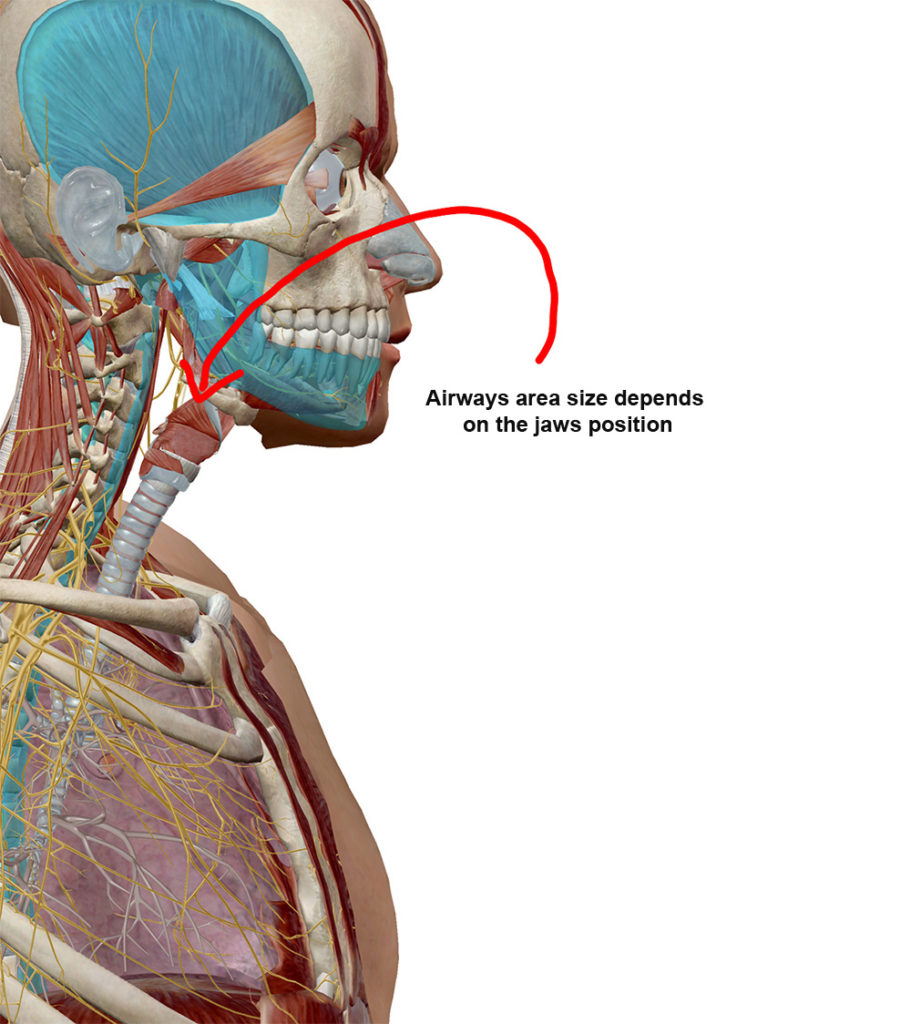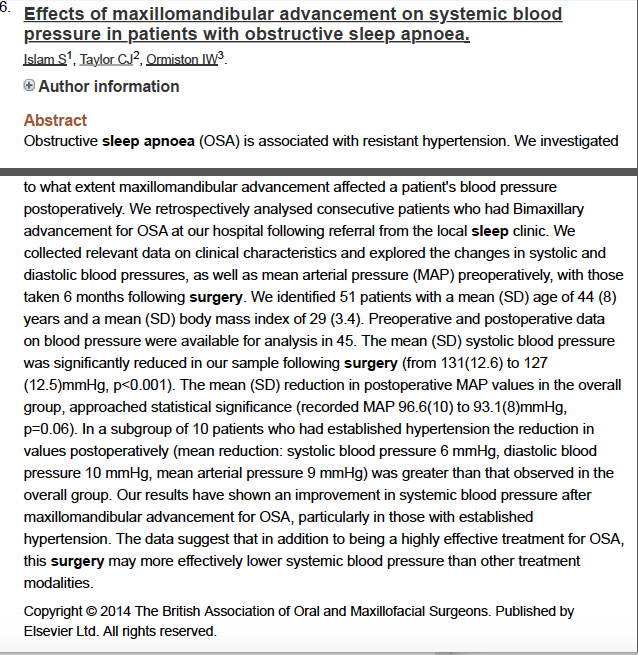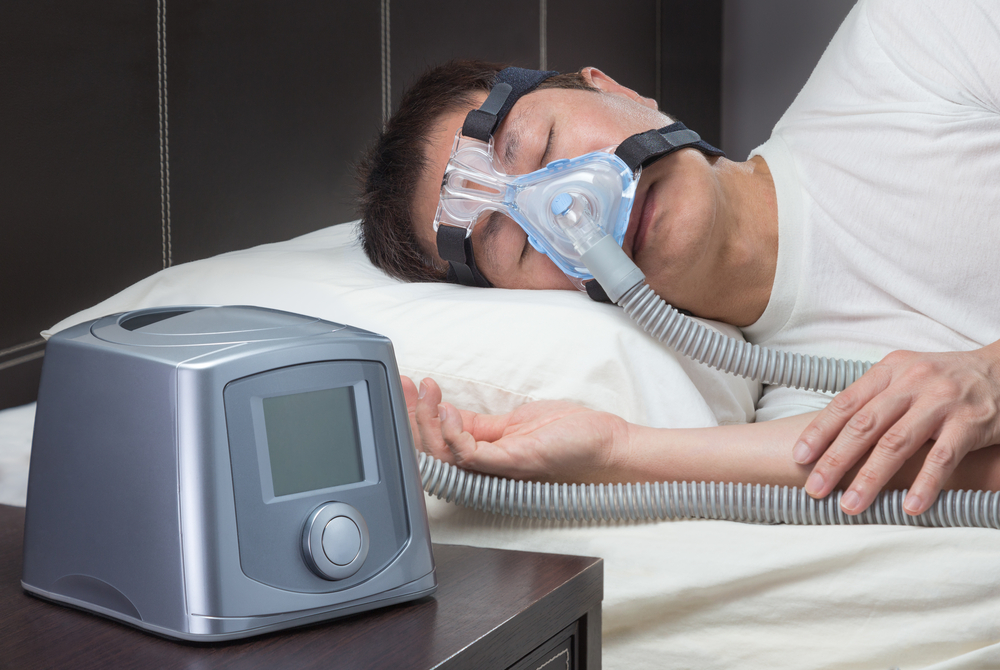Can we avoid the nocturnal positive pressure dental appliance?
Sleep apnea is most of the time related to an obstruction of the airways: the airway space is anatomically reduced.
Maxillomandibular advancement, surgery permanently frees and increases the obstructed breathing space (behind the tongue’s base, soft palate, and throat) permanently.
The sleep research service at Stanford University in the USA has been analyzing the results of severe sleep apnea treatment with orthognathic surgery. Based on a meta-analysis, it includes several hundred referenced studies on the subject on more than 600 patients have had surgeries to treat severe sleep apnea.
Stanford’s US study found that more than 85% of patients undergoing bimaxillary advancement, orthognathic surgery had a sufficient airway correction which enabled them to avoid wearing a nocturnal positive pressure dental appliance.
This confirms older studies.
What is this surgery?
Jaws and mandible are too far forward.
This leads to an enlargement of the airways, and a better airflow while sleeping.
This osteotomy can be performed when there is an important retractation of the maxillary or mandible, and also when the patient’s profile isn’t harmonious (jaw is too far backward, it’s called a cis frontal profile), resulting from growth disorders during the childhood or physiological aging of the face.
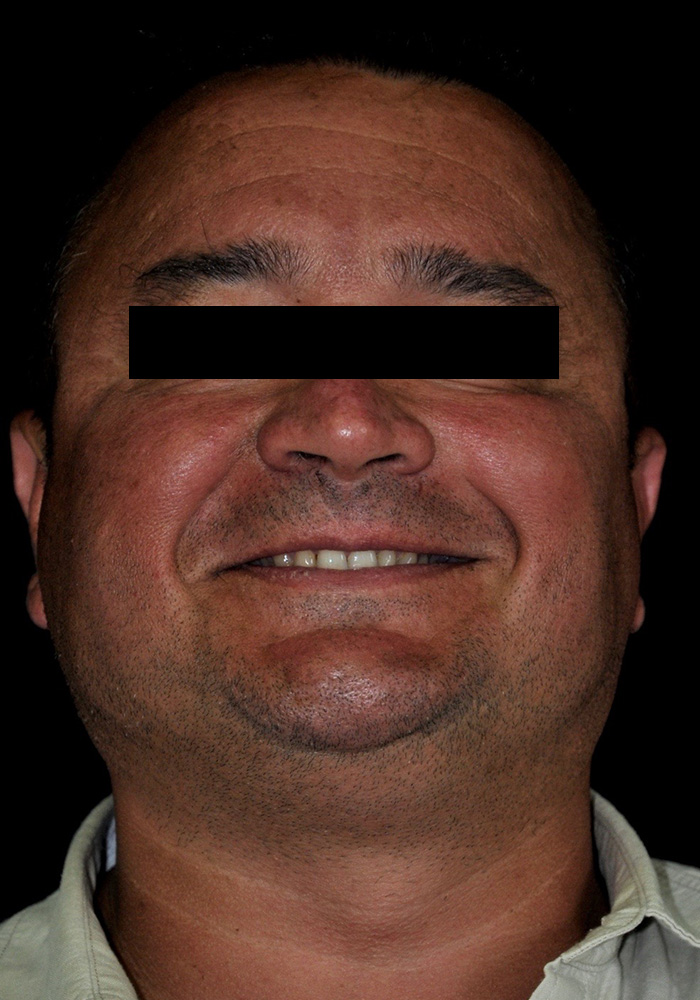
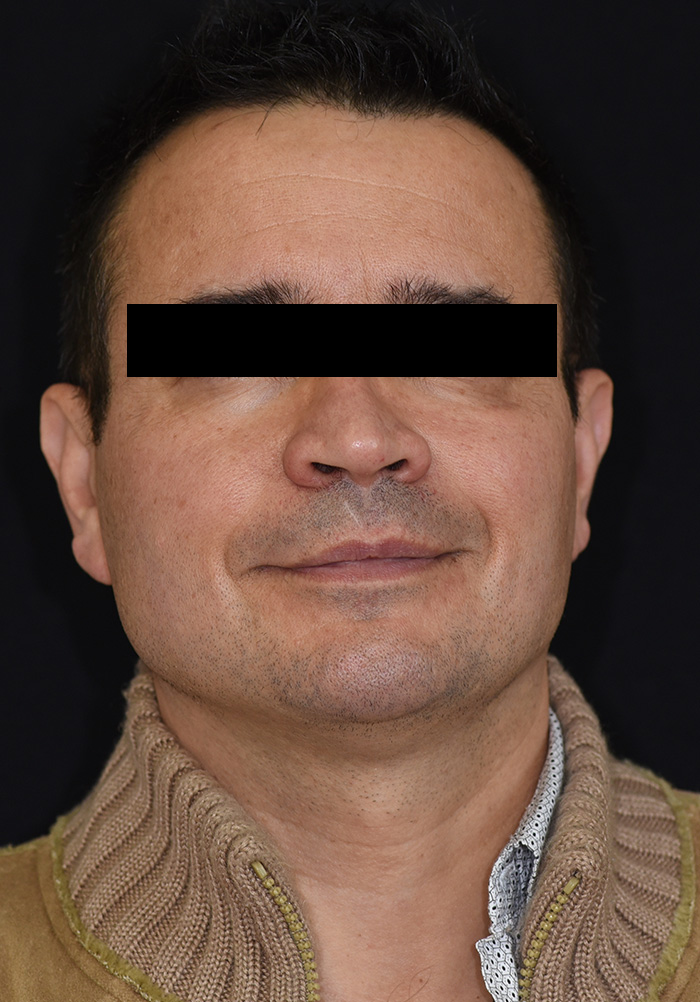
Benefits of orthognathic surgery
Decrease in blood pressure is greater than with other treatments, better sleep quality, and in some cases rejuvenation of the face.
Learn more…
When the patient has obstructive sleep apnea, and has failed wearing CPAP, or refuses to have one and when cephalometric analysis confirms it, advanced jaw and mandibular othognathic surgery is the best technique: it is a reliable, proven and definitive technic for the treatment of sleep apnea, and the only way to get rid of nocturnal positive pressure ventilation and to consider hope for a cure in the majority of cases (more than 85% of patients operated).
It is during a consultation that we will be able to evaluate the possibility of recommending this technique, depending on the history of your illness, your motivation, your wish to free yourself from continuous positive airway pressure ventilation (CPAP), the clinical examinations and the results of the additional examinations which you will be asked for.
How is the surgery done ?
You should arrive at the clinic one day before the surgery.
You usually return home on the second day after the operation.
Soft food for 5 weeks.
You can get back to your normal activity within 2 to 4 weeks.
What are the possible complications?
The most common complication is a sensitivity of the lip which will never be the same.
In 15% of the cases, despite an improvement of the symptomatology, night ventilation with positive pressure remains indicated.
How would I know if the surgery has been successful ?
In most cases, patients who have undergone a surgery spontaneously stop using nocturnal appliance, they feel better, the spouse immediately notices fewer nocturnal awakenings, a better quality of sleep.
Sleep Polysomnography test, performed two months after surgery will show if you have been cured (85% of cases) or not.


